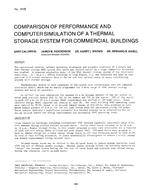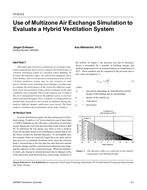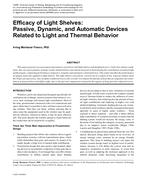One of the dilemmas of this decade seems to be the fact that the need for comfort and high-density cooling increases with global warming while global warming further increases with its resultant CO2 emissions. This dilemma can only be solved by achieving cooling systems with smaller CO2 footprints. This effort involves multiple fronts, namely, new, sustainable, and low-exergy cooling systems, highly efficient cooling energy supplies, novel distribution networks, and innovative energy conversion systems. All of these solutions must, however, meet at a common denominator for decisionmaking. In this paper, the common denominator is defined to be the Rational Exergy Management Model (REMM), which provides a robust algorithm to link the supply and demand exergy points in the cooling sector for a given district. The objective is to minimize the CO2 footprint of the entire cooling sector in a district to guide green cities from split systems to district cooling.
Citation: ASHRAE Conference Papers, 2010, vol. 116, pt. 2, Albuquerque, NM
Product Details
- Published:
- 2010
- Number of Pages:
- 8
- File Size:
- 1 file , 1 MB
- Product Code(s):
- D-AB-10-C013


